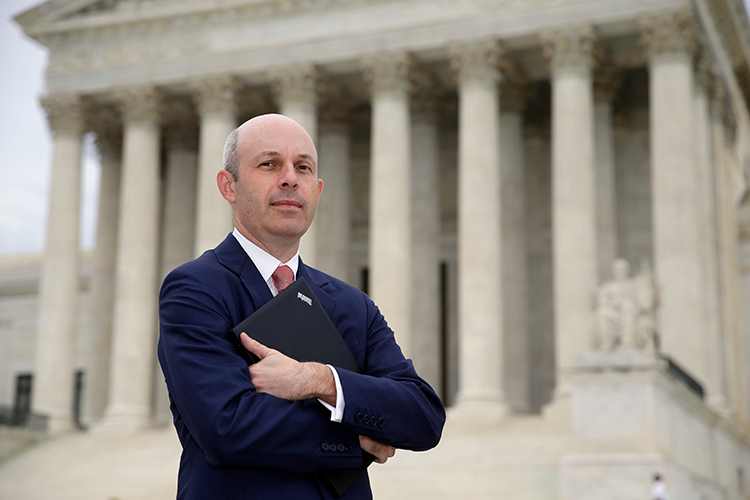Court rules on birth certificate designations for same-sex parents
Chief Justice weighs in
Another member of the court has drawn scrutiny with regard to the per curiam decision in Pavan. Chief Justice John G. Roberts Jr. wrote the lead dissent in Obergefell, delivering an impassioned summary from the bench (his first and only such bench dissent so far) about how the court was exceeding its authority in requiring states to recognize same-sex marriages.
But Roberts did not join the dissent in Pavan. Does that necessarily mean he joined the majority per curiam opinion? Opinion is divided.
Speaking during a panel discussion at the University of California at Irvine School of Law in July, liberal constitutional scholar Erwin Chemerinsky said he would read the Pavan decision as 6 to 3, with Roberts in the majority. (Chemerinsky, an ABA Journal contributor, became dean of Berkeley Law on July 1.)
Conservative Judge Alex Kozinski of the 9th U.S. Circuit Court of Appeals at San Francisco, speaking on the same panel, said he also would interpret the decision as including Roberts in the majority.
But some scholars who happen to be relatively recent Supreme Court law clerks were quick to chime in on the nuances of the high court’s “shadow docket”—summary reversals and other per curiam actions typically issued without full briefings and arguments.
Will Baude, a professor at the University of Chicago Law School and a former law clerk to Roberts who has studied the shadow docket, told the Washington Post that there are times in a per curiam action that a justice might not agree with the majority but may elect not to publicly dissent.
Joshua Matz, a Washington, D.C., lawyer, wrote in the blog Take Care on June 27 that the Pavan per curiam opinion “has been widely misinterpreted as demonstrating that Chief Justice Roberts has accepted (or resigned himself to) Obergefell.”
“Respectfully, that interpretation is incorrect. Pavan tells us nothing about the chief’s position on Obergefell,” wrote Matz, a former clerk to Justice Anthony M. Kennedy during the same term in which Kennedy was the author of the majority opinion in Obergefell.
Where they stand
Matz wrote that there are several possible reasons for such a “secret dissent,” including to conceal the justice’s views from the public and thereby retain future flexibility, as a display of good will to the majority or the institution as a whole, or to avoid needlessly creating the appearance of conflict.
As he suggested, the debate is more than just academic. The question of whether the chief justice would fully support Obergefell as a matter of stare decisis is all the more important, given Kennedy’s potential retirement and the fears among some same-sex marriage proponents that a more conservative replacement for him might upset settled matters.
Matz said no one should conclude that Roberts has accepted Obergefell as stare decisis until there is “crystal clear evidence of that development.”
“Pavan does not afford such evidence,” Matz continued. “Rather, it tells us nothing: The chief could have been in the majority (heck, he could have written it), or he could have dissented without publicly noting his disagreement. It is not hard to imagine reasons why, if he did dissent, the chief would have preferred to keep his position concealed from the outside world.”
Sakimura says Roberts joined another majority opinion during this past term that approvingly cited Obergefell. That was Sessions v. Morales-Santana, in which Justice Ruth Bader Ginsburg wrote on behalf of a majority that struck down a provision of U.S. immigration law that treated mothers and fathers differently.
Sakimura says when it comes to Pavan, “we can’t really know how Roberts voted. But we know that he did not join the dissent. He did not publicly attempt to undermine the stare decisis power of Obergefell.”
This article appeared in the September 2017 issue of the ABA Journal with the headline “Married with Kids: Court rules on birth certificate designations for same-sex parents.”



